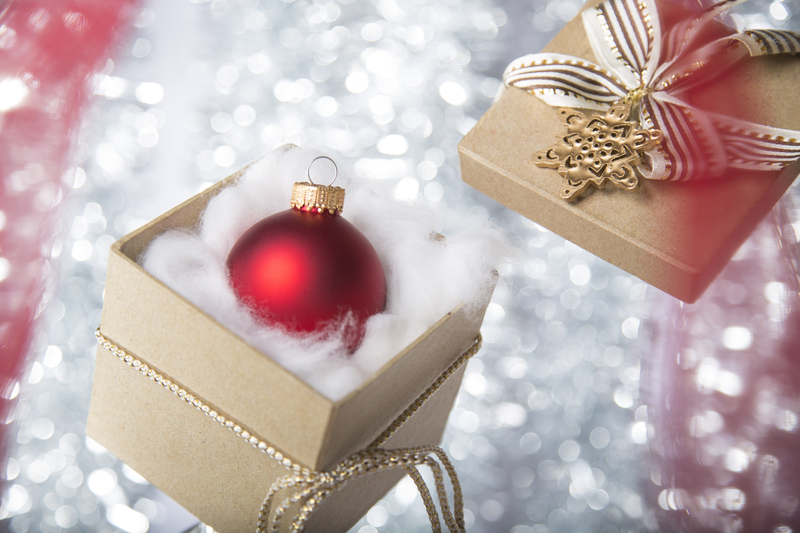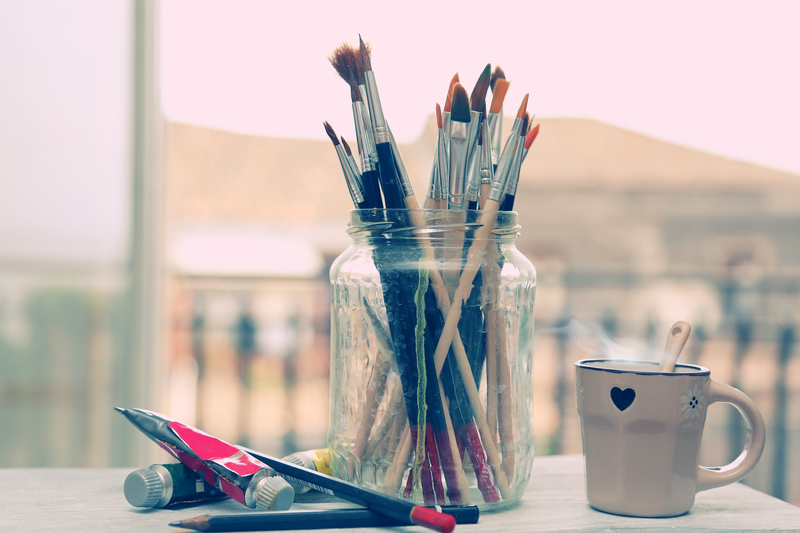Creative Ways to Dispose and Recycle Your Old Pots and Pans
Are old pots and pans cluttering your kitchen cabinets? Whether they've become warped, scratched, or simply outlived their usefulness, learning how to responsibly dispose of old cookware is essential for both your home and the planet. Instead of tossing them in the trash, explore these innovative ideas for recycling and repurposing pots and pans. Discover eco-friendly methods and creative projects that give your kitchenware new life!
Why Properly Disposing of Old Cookware Matters
Most pots and pans contain metals or non-stick coatings that shouldn't end up in landfills. Recycling or upcycling cookware helps reduce environmental impact and may even benefit your local community. Let's look at the most common types of old kitchenware and their environmental effects:
- Aluminum pans: Easily recyclable, but take up space if discarded improperly.
- Stainless steel cookware: Durable and high-value for scrap recyclers.
- Cast iron skillets: Long-lasting, but heavy and recyclable.
- Non-stick pans: Coatings contain chemicals that can leach into landfills.
- Copper pots: Highly valuable for scrap, yet toxic if not disposed of correctly.
By learning creative ways to recycle pots and pans, you help conserve resources and keep hazardous materials out of landfills.

How to Decide: Dispose, Recycle, or Reuse?
Before you do anything, inspect your old pots and pans. Ask yourself:
- Is it still usable? Donate if so!
- Is it damaged, cracked, or warped? Recycling or upcycling may be best.
- Does it have a non-stick coating? Be especially careful how you dispose of these, as they can release toxins.
With that in mind, let's dive into the most creative solutions for old cookware.
1. Recycle Your Old Pots and Pans
Find a Local Scrap Metal Facility
Many pots and pans are made of valuable metals like aluminum, stainless steel, and copper. Most local recycling centers accept these if you drop them off at the metals section. Before you go:
- Remove plastic handles or glass lids: Metal-only facilities will require these parts separated.
- Check your town's recycling policy: Some municipal programs will pick up metals curbside if correctly sorted.
- Clean the cookware: Scrape off food residue for easier processing and hygiene.
*Tip*: Call your local center to confirm accepted items and sorting requirements.
What About Non-Stick Cookware?
Traditional non-stick coatings (like Teflon) are trickier to recycle. Many centers don't accept them due to chemical concerns. Check if your region offers specialty recycling programs for non-stick pans. You may need to:
- Contact the manufacturer--some companies take back old products for recycling.
- Look for mail-in cookware recycling programs online.
- Ask about hazardous waste collection events for chemically coated pans.
2. Donate or Gift Usable Cookware
Help Others While Cleaning Out Your Kitchen
Before recycling, consider the old adage: "One person's trash is another's treasure." If your pots and pans are still serviceable:
- Local charities: Drop them at thrift stores or shelters. Many organizations help families in need set up kitchens.
- Community groups and schools: Art faculties, theater departments, and culinary classes may welcome donations.
- Online platforms: List your cookware for free on Craigslist, Facebook Marketplace, or Freecycle.
Donating extends the lifespan of old pots and pans and supports others who can't afford new kitchen items.
3. Upcycling: Transform Old Pots and Pans into Something New
Get Crafty with Creative Repurposing
Why not flex your creativity? Upcycling is an eco-friendly, satisfying way to keep old kitchen pans out of landfills. Here are some imaginative ideas to inspire your DIY recycling projects:
- Planters: Drill drainage holes in pots or pans, fill with soil, and grow herbs or flowers on your balcony or patio.
- Bird feeders: Suspend an old frying pan with twine and fill it with seeds for feathered friends.
- Wall art and clocks: Paint a decorative scene on a pan's interior, or insert a clock mechanism for a kitchen-themed clock.
- Storage bins: Hanging pots beneath shelves as baskets for fruits, napkins, or utensils.
- Candleholders: Cast iron and metal pans make excellent, rustic bases for candles or tealight displays.
- Garden stepping stones: Fill with concrete and press in stones or shells for unique garden pavers.
- Pet bowls or beds: Give your furry friends a quirky feeding or resting spot!
*Bonus*: Search Pinterest or DIY blogs for step-by-step guides on reusing old cookware for endless inspiration.
4. Creative Community Projects Using Pots and Pans
Join Local Artists and Organizations
Many art collectives, schools, and community gardens run workshops where old cookware is transformed into communal art or tools.
- Garden projects: Contribute used pans for shared planters or compost scoops.
- Sound installations: Pots and pans make unique percussive instruments for children's music events!
- Art sculptures: Join or donate to art projects converting old cookware into public artwork.
Contact local environmental groups or makerspaces to see how your old pots and pans could become part of a community masterpiece.
5. Check Retailer Take-Back and Trade-In Programs
Big-Box Stores Want Your Old Pans!
A growing number of retailers offer trade-in and cookware recycling programs. Some brands accept old pots and pans--regardless of where you bought them--and may even give you a discount for bringing them in. Here's what to look for:
- Circular economy programs: Companies like TerraCycle and select kitchenware manufacturers collect, dismantle, and recycle old cookware.
- Retailer exchanges: Major chains sometimes offer discounts or gift cards for returned pots and pans during special recycling events.
- In-store drop-offs: Check with kitchenware and department stores in your area about their recycling opportunities.
*Tip*: Always clean items before returning them to the store for recycling or trade-in.
6. Creative Gifts and Decor with Upcycled Cookware
Handmade Presents from Old Pots and Pans
For those who love personalized, eco-friendly gifts, repurpose an old pan into something special:
- Painted decor trays: Give a non-stick pan a vibrant makeover as a serving tray.
- Shadow boxes: Deep pans can display treasured objects behind glass.
- Family heirlooms: Refurbish and pass down a well-loved cast iron skillet as a sentimental kitchen keepsake.
With a little creativity, old cookware becomes an artful reminder of cooking memories and sustainability.
7. Disposing of Old Pots and Pans Responsibly
What Not to Do
Avoid simply throwing pots and pans into your regular trash or leaving them on the curb. Most city recycling programs won't sort them from household waste, leading to unnecessary landfill build-up.
Hazardous Waste Concerns
Some cookware, especially older or non-stick varieties, may contain hazardous materials such as per- and polyfluoroalkyl substances (PFAS). Handle these items carefully. Always check with municipalities about safe disposal, especially for chemical coatings or glass lids.
8. How to Prepare Pots and Pans for Recycling
Simple Steps for Effective Recycling
- Remove all non-metal materials: Detach lids, handles, rubber or plastic parts. This helps recyclers and prevents contamination.
- Wipe and rinse: Scrub out food residue to make the recycling process smoother and more sanitary.
- Sort by type: If dropping off at a facility, separate aluminum, stainless steel, and copper cookware.
Preparing your cookware ensures your recycling efforts actually help--and aren't discarded as waste.
9. Frequently Asked Questions About Old Pots and Pans
Can I put pans in my curbside recycling?
Many municipalities do not accept pots and pans in curbside bins, since recycling centers are not equipped to handle bulky metal objects or specialized coatings. Always check with your local provider.
Are non-stick pans recyclable?
Most are not accepted in standard metal recycling because of their chemical coatings. Look for specialized recycling programs or mail-in services.
What about cast iron skillets?
Almost all scrap yards will accept cast iron. However, consider refurbishing first--these pans are incredibly durable and valuable as vintage kitchenware!
Should I remove handles or lids before recycling?
Yes! Remove any plastic, rubber, or glass before recycling. These materials belong in their respective recycling streams, not metal.
10. Summary: Choose a Creative and Eco-Friendly Solution!
Whatever the material or condition of your cookware, there are many creative ways to dispose and recycle old pots and pans. By recycling, donating, or upcycling, you reduce waste, support community efforts, and add a personal touch to your home and garden decor. Embrace the sustainable kitchen movement--your old pots and pans have more to offer than you might think!

Key Takeaways for Disposing and Recycling Old Cookware
- Check recyclability: Separate metal from other materials, and verify if your local facility takes them.
- Donate before discarding: Give usable pans to charities or culinary schools.
- Get creative: Transform old pans into planters, art, clocks, or pet bowls.
- Contact retailers: Ask about recycling programs or trade-in events for cookware.
- Avoid the landfill: Reduce environmental harm by disposing of non-stick and hazardous materials properly.
Conclusion
Disposing of and recycling old pots and pans doesn't have to be wasteful. With a little research and creativity, you can extend the life of your cookware, contribute to your community, or create something unique for your home. Next time you upgrade your kitchen, remember these eco-friendly cookware disposal ideas for a cleaner and greener planet!